From cyanide-spewing millipedes to albino redwoods, these are oddities among giants
Coast redwood forests and giant sequoia groves are famous for their iconic beauty, but lesser known are the peculiar wonders they harbor. Here are a handful.
Far-out animals
Shown above, the fantastic, yellow-spotted millipede, Harpaphe haydeniana, roams freely through the coast redwood forest. Often found crawling in the duff on the forest floor, H. Haydeniana is multilegged invertebrate that demands respect. When it senses danger, this millepede curls up in a ball and releases the sweet almond scent of hydrogen cyanide. It’s a deadly chemical deterrent and is one to watch out for, especially if you are a beetle hoping to catch a quick meal. For people, the threat is pretty low.
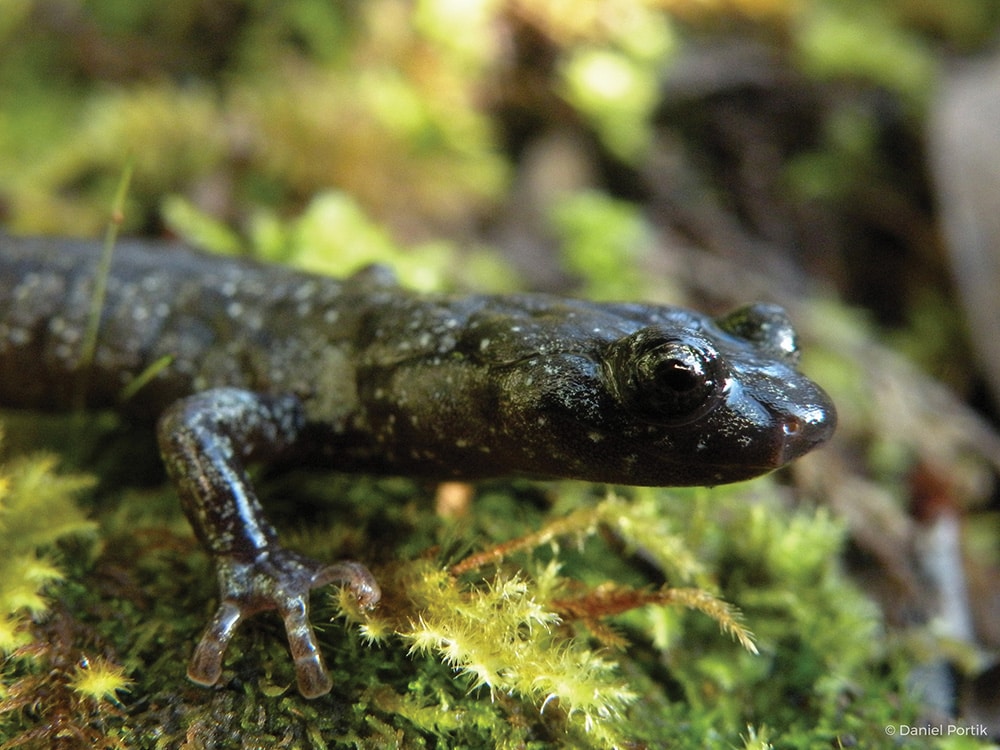
The wandering salamander, Aneides vagrans, has no lungs and breathes through its skin. An individual wandering salamander may live its entire life in a single tree! The creature’s skin is camouflaged to blend in perfectly with the lichen-covered bark of redwood trees, helping it hunt the small insects that also inhabit the forest canopy.
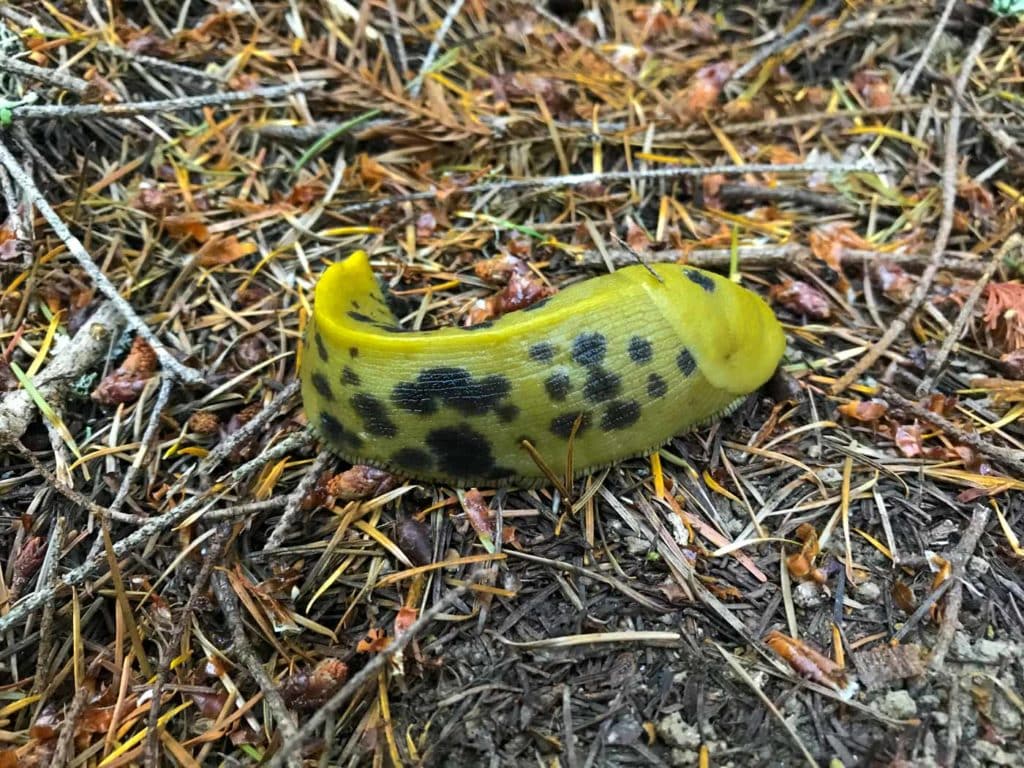
Did you know that the coast redwood forest is home to the largest slug in North America and the second largest slug worldwide? Yep, our very own banana slug, Ariolimax columbianus, grows up to 8 inches long and can live for seven years. Perhaps the most fascinating aspect of the banana slug is their mating behavior. These slugs are hermaphrodites and can fight before mating (the slug equivalent of biting). It isn’t uncommon for one of the slugs to chew the penis of its mate and render it unable to fertilize other slug eggs.
Strange plants
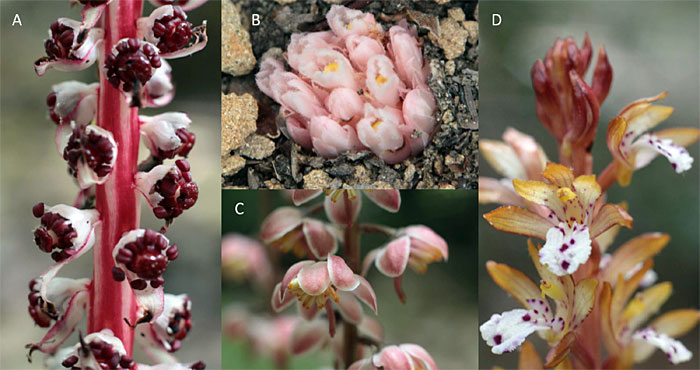
In the shady mixed conifer and hardwood forests of the Pacific Northwest are red and white flowers are called “mycotrophs” (“myco” meaning “fungus” and “troph” relating to nutrition). Mycotrophs depend on fungi for food, unlike green plants, which make their food from sunlight, water, and carbon dioxide. Learn more about these unusual plants on the US Forest Service mycotroph page.
Mycotrophs get sugars from green plants through an intricate network of fungi that grow between the roots of the flowers and the trees. Connected by fungi and the sharing of food, these flowers wouldn’t exist without their fungal and tree partners.
Mycotrophs are rare because they only occur in places where the partner tree species and fungus are living.
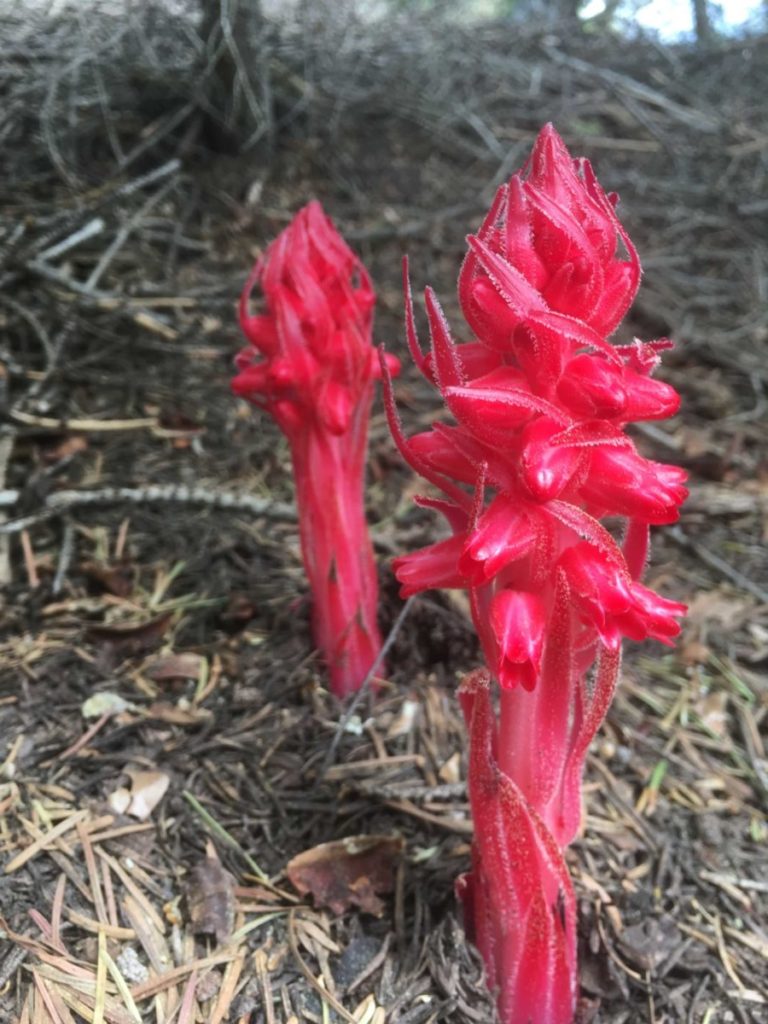
In the in giant sequoia forests and other coniferous montane areas of California, Oregon, and Nevada, grows another mycotroph: the snow plant. Its scientific name, Sarcodes sanguinea, translates roughly to “bloody flesh-like thing,” in reference to the bright red color of the entire plant.
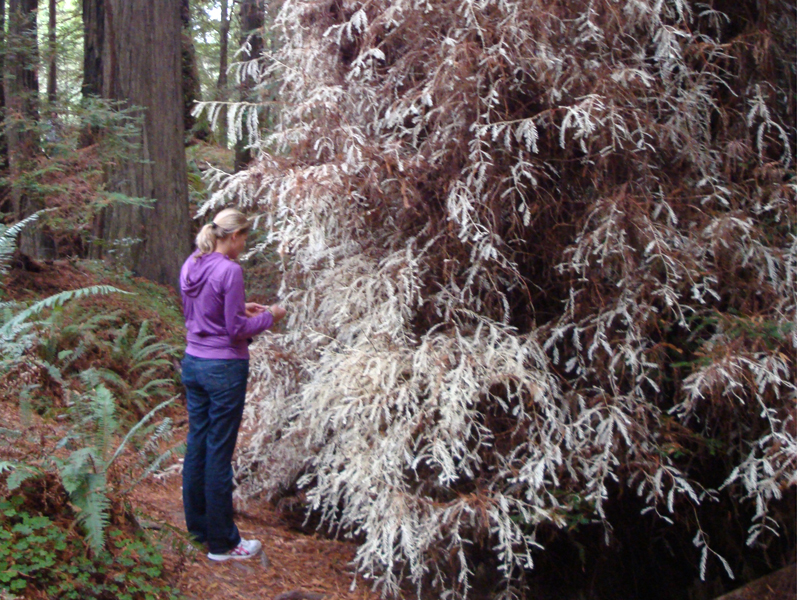
Albino redwoods are another strange plant. Lacking chlorophyll, they must depend on a sibling or parent tree for sustenance. Their white needles seem to glow against the backdrop of the dark forests in which they live. Normally, albinism is fatal to trees. Albino redwoods, an exception due to the general hardiness of the species, can live for half a century or more.

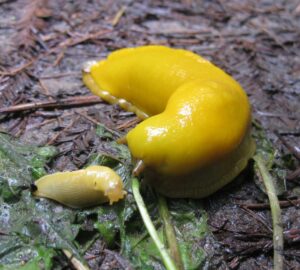
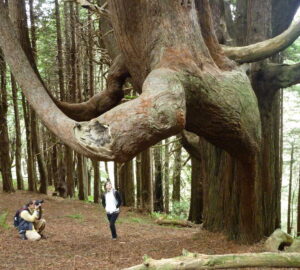
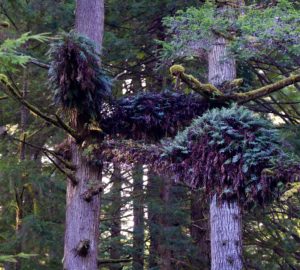
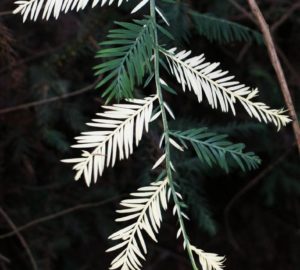
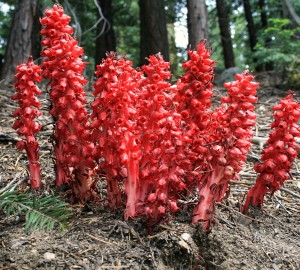
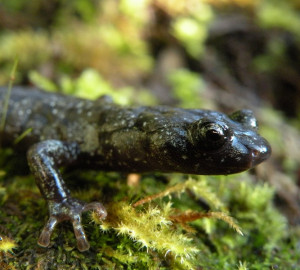
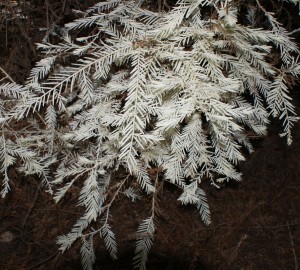
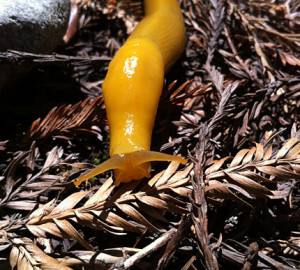
One Response to “9 weird plants and animals of redwood forests”
George
they all are so weird